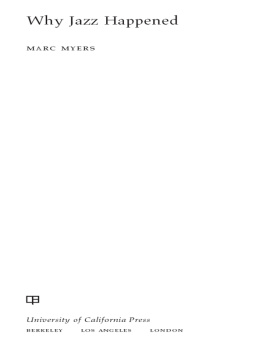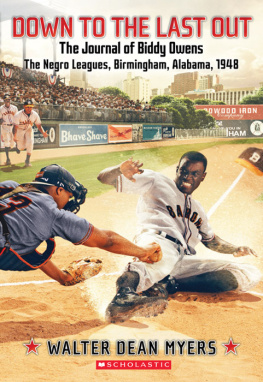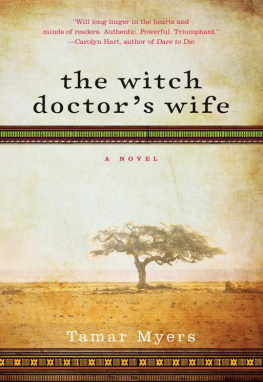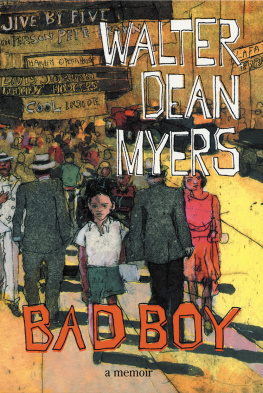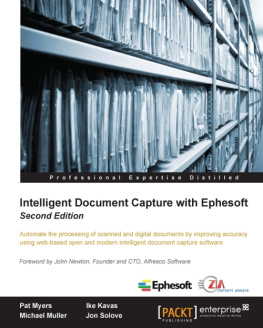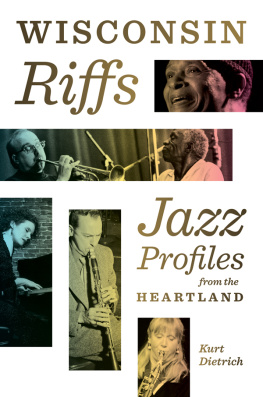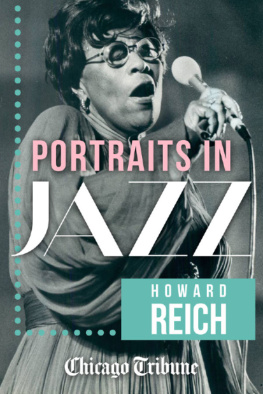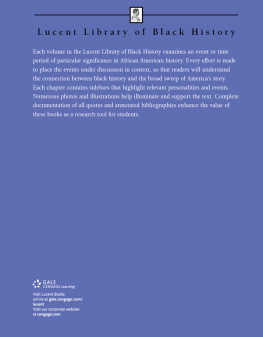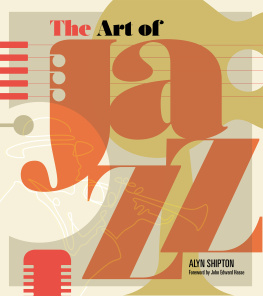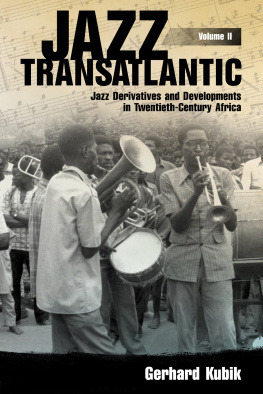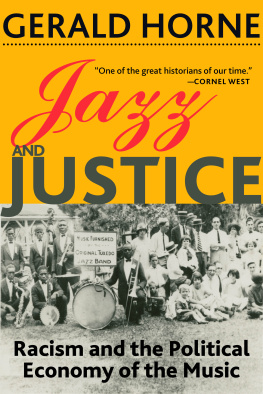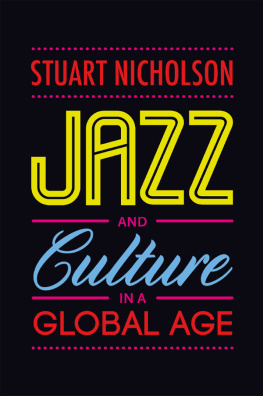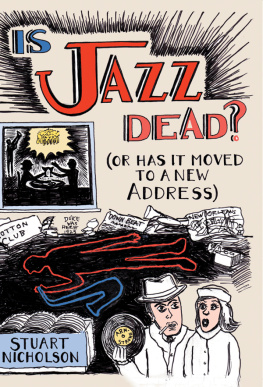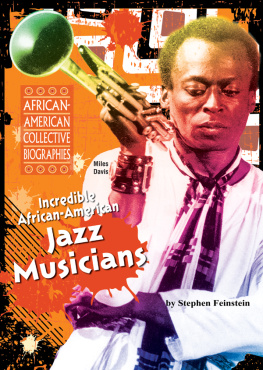
Why Jazz Happened
Why Jazz Happened
MARC MYERS

University of California Press
BERKELEY LOS ANGELES LONDON
University of California Press, one of the most distinguished university presses in the United States, enriches lives around the world by advancing scholarship in the humanities, social sciences, and natural sciences. Its activities are supported by the UC Press Foundation and by philanthropic contributions from individuals and institutions. For more information, visit www.ucpress.edu.
University of California Press
Berkeley and Los Angeles, California
University of California Press, Ltd.
London, England
2013 by The Regents of the University of California
Library of Congress Cataloging-in-Publication Data
Myers, Marc, 1956
Why jazz happened / Marc Myers.
p. cm.
Includes bibliographical references and index.
ISBN 978-0-520-26878-4 (cloth : alk. paper)
1. JazzHistory and criticism. I. Title.
ML3508.M94 2013
781.655dc23
2012022218
Manufactured in the United States of America
22 21 20 19 18 17 16 15 14 13
10 9 8 7 6 5 4 3 2 1
In keeping with a commitment to support environmentally responsible and sustainable printing practices, UC Press has printed this book on Rolland Enviro100, a 100% post-consumer fiber paper that is FSC certified, deinked, processed chlorine-free, and manufactured with renewable biogas energy. It is acid-free and EcoLogo certified.
For Olivia,
the daughter I love madly.
And for Alyse.
My world, my love. Forever Alyse.
Contents
Acknowledgments
This book began after the eminent jazz writer and critic Nat Hentoff answered his phone. As a teen, I was in awe of Nats jazz books and album liner noteshis authority, the quality of his storytelling, and the ease of his language. So in recent years it has been both thrilling and gratifying to receive calls from him regularly about my jazz articles for the Wall Street Journal and my posts at JazzWax.com.
In 2009, when I began to develop the idea for this bookapproaching jazz history from the outside inI called Nat to run it by him. Nat was excited and insisted immediately that I pitch my concept to Mary Francis, his editor at the University of California Press. Thanks, Nat, for your inspiring calls, unrestrained passion, and enormous generosity.
Thanks to my editor Mary Francis, whose fine ear, sage guidance, and cheerleading throughout this processfrom proposal to coverwere invaluable. Mary truly is a jazz saint and arts hero, and this book would not have been possible without her input and support. And thanks to the University of California Presss Jacqueline Volin, Stephanie Fay, and Kim Hogeland.
A big thanks to
The legendary photographer Herb Snitzer, whose daily support and generosity prove that artists from the 50s are indeed motivated by humanity and joy. Many thanks for everything.
The photographer and author Hank ONeal, whose support, friendship, sharp eye, relentless optimism, and subversive wit always remind me why jazz matters.
The brilliant writer-critic and dear friend Terry Teachout, who first insisted that I write about jazz in 2007 and has been there ever since. The Wall Street Journals Leisure & Arts editor Eric Gibson, who continues to encourage me to write about the musicians and events that excite me most. The jazz musician and writer-editor Bill Kirchner, who kept an eye on me. And producer Fred Seibert, who invented fun and always reminds me that thinking differently about everything is ultimately whats interesting. I thank them all.
Dan Morgenstern, Ira Gitler, and George Avakianjazzs wise menwere there for me throughout the reporting and writing process. I am grateful for their insistence on scholarship, passion, and a great story.
Thanks to all the many musicians and eyewitnesses who were interviewed for this book: Burt Bacharach, Hal Blaine, Randy Brecker, Dave Brubeck, Gary Burton, Ron Carter, Teddy Charles, Buddy Collette, Chick Corea, Buddy DeFranco, Russ Garcia, Herb Geller, Ira Gitler, Benny Golson, Chico Hamilton, Bill Hanley, Nat Hentoff, Bill Holman, Marjorie Hyams, Dick Hyman, Joseph Jarman, Larry Kart, Dick Katz, Orrin Keepnews, Dick LaPalm, Yusef Lateef, John Levy, John Litweiler, Hal McKusick, John McLaughlin, Howard Mandel, Johnny Mandel, Edward Chip Monck, Dan Morgenstern, Lennie Niehaus, Dave Pell, Benny Powell, Phil Ramone, Sonny Rollins, Howard Rumsey, Ray Santos, Gunther Schuller, Grace Slick, Carol Sloane, Al Stewart, Billy Taylor, Creed Taylor, Jack Tracy, George Wein, Randy Weston, and Joe Wilder.
Thanks to my mother, Bernice Myers, a childrens-book author and illustrator, who got me hooked on the printed word and images before I could walk. My late father, Lou Myers, an artist-writer, who taught me about deadlines, hard work, and the value of simplicity. And my brother, Danny, who, unlike me, actually became a professional musician.
My loving wife, Alyse, a beautiful writer, author, and muse, who provided unconditional emotional support and on-point editorial advice.
And my daughter Olivia, whose wide smile, deep love, and electrifying excitement always inspire me to go the extra distance and do my best.
Introduction
The history of recorded jazz can be traced back to February 26, 1917. On that Monday, members of the Original Dixieland Jass Band rode the freight elevator up to the twelfth floor of 46 West 38th Street in New York, where weeks earlier the Victor Talking Machine Company had opened its new recording studio. After assembling their instruments, the all-white quintet from New Orleans played Dixieland Jass Band One-Step and Livery Stable Blues into the long metal horn that served as a microphone back then. When the songs were released weeks later on either side of a single 78-rpm record, the bands highly syncopated and somewhat frantic Dixieland fox-trot became an overnight sensation. Appearing in music stores just days after the United States entered World War I, the record was promoted in newspapers as a brass band gone crazy,
But the Original Dixieland Jass Band was less original than its name implied. Black musicians in New Orleans had already developed the up-tempo music style in 1906 as an instrumental offshoot of ragtime. Although the Original Dixieland Jass Bands white musicians were from New Orleans, and some had begun their careers playing in the citys integrated parade bands, the ensembles formation in early 1916 was the brainstorm of Harry James, an enterprising caf owner in Chicago who heard the musicians while he was in the Crescent City to see a prize fight.
By 1916 Chicago was already a music center. Tom Browns Band from Dixieland was having some success at Chicago restaurants, and there seemed to be plenty of room in town for another Southern dance attraction. When Jamess recruited musicians began their Chicago engagement at Schillers Caf in March 1916, they called themselves Steins Dixie Jass Band, after their drummer, Johnny Stein. But after several name changes and personnel swaps, the group settled on the Original Dixieland Jass Band, to distinguish itself from all competitors. The new namewith its built-in point of differencewas somewhat boastful and helped the band stand out in a town noisy with entertainment. Toward the end of 1916, the group came to the attention of the singer Al Jolson, who enthusiastically wired Max Hart, his New York agent. Hart booked the musicians into the Paradise Ballroom at the Reisenweber Building near Columbus Circle in Manhattan.
Next page
